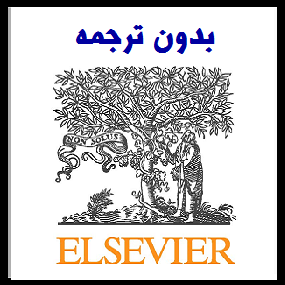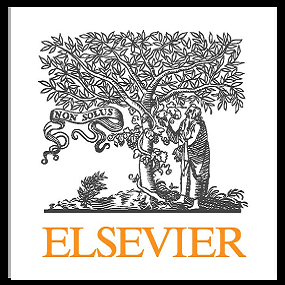مقاله انگلیسی تاثیر هنر درمانی در خلق و خو و کاهش درد و اضطراب بیماران (2018 الزویر)


| عنوان فارسی مقاله | تاثیر هنر درمانی در خلق و خو و کاهش درد و اضطراب پیشنهادی برای بیماران بستری شده در طول درمان حاد بیمارستان |
| عنوان انگلیسی مقاله | Art therapy improves mood, and reduces pain and anxiety when offered at bedside during acute hospital treatmen |
| نمونه مقاله انگلیسی | Introduction
Hospitalization can be a stressful and anxiety producing experience. Whether hospitalized for trauma, sudden illness, planned surgical intervention, or as a readmission for a chronic condition, a patient may experience a myriad of emotions, including but not limited to fear, worry, confusion, and mood disruption (Bar-Sela, Atid, Danos, Gabay, & Epelbaum, 2007; Tully et al., 2011). Comorbid issues of depression and anxiety are a common experience for medically ill hospitalized patients (Gaus, Kiep, Holtkamp, Burkert, & Kendel, 2015; Glinzak, 2016; Maujean, Pepping, & Kendall, 2014; Pederson, Majumdar, Forhan, Johnson, & McAlister, 2016; Sokoreli et al., 2016). Feelings of stress can exacerbate and be exacerbated by issues of pain as well (Angheluta & Lee, 2011). Although the management of pain is a priority, it can be a difficult task that is further complicated by the highly subjective nature of pain. Poorly managed pain not only increases physical stress and compromises healing, but can lead to loss of hope, feelings of helplessness, and a lessening sense of control and personal efficacy (Eytan & Elkis-Abuhoff, 2013). Pederson et al. (2016) noted that poorly managed or unacknowledged symptoms of depression and anxiety may negatively impact 30 day readmission rates. Additionally, hospital length of stay is often increased when psychosocial needs are not met (Carter et al., 2016). Perhaps most importantly, unmanaged psychosocial stress levels can negatively impact prognosis and survival rates, especially amongst those with a diagnosis of cancer or cardiac disease (Bar-Sela et al., 2007; Ramos, Prata, Bettencourt, Gonc¸ alves, & Coelho, 2016; Sokoreli et al., 2016; Tully et al., 2011). This is unfortunate and very likely unnecessary, since studies have demonstrated that experiences of anxiety and depression can be predicted for most patients, and therefore could be addressed during hospitalization (Basak et al., 2015). Art therapy (AT) has been shown to help unaddressed psychosocial distress in hospitalized patients and to promote better management of physical symptoms, overall well-being, and socialization (Angheluta & Lee, 2011; Kapitan, 2012). As a psychotherapeutic approach, art therapists can assess and engage patients in the creation of art to encourage emotional and physical healing. Through the creation of art, patients can visually express unconscious emotions which can often be explored through metaphor (Angheluta & Lee, 2011). This approach may also feel less invasive to patients who may not perceive themselves as having psychological issues, yet are in need of supportive care. Furthermore, there is evidence that AT can help reduce distress in people with cancer (Glinzak, 2016; Jang, Kang, Lee, & Lee, 2016; Wood, Low, Molassiotis, & Tookman, 2013); HIV/AIDS (Feldman, Betts, & Blausey, 2014); neurologically based trauma (Hass-Cohen, Clyde Findlay, Carr, & Vanderlan, 2014); and epilepsy (Stafstrom, Havlena, & Krezinski, 2012). This reduction of distress may in turn help to reduce related symptoms of anxiety (Ali, Gammidge, & Waller, 2014; Barel-Shoshani & Kreitler, 2017; Safrai, 2013). Anxiety is not unexpected in acutely ill persons, as it is exacerbated by feelings of insecurity, fear of the unknown, and physiological reactions such as increase adrenaline and cortisol which often accompany a hospital stay. Art therapy can assist in reducing anxiety through not only the mindful and soothing use of art materials, but through the feelings of attachment and comfort created by the triangular relationship between the art, the art process, and the art therapist (Czamanski-Cohen & Weihs, 2016). In a 2014 study of stroke survivors (n = 6), Khalid et al. found that stroke patients who attended an art therapy group at for at least five sessions had a reduction in anxiety level from borderline normal (8–۱۰) to normal (0–۷) range as measured by the Hospital Anxiety and Depression scale. Similarly, a significant decrease in anxiety levels were found via the Geriatric Anxiety Inventory, in a group identified as “anxious adults” (n = 44) who participated in a four week art therapy program that compared two art therapy approaches (Ezell, 2017). More research is needed on the links between anxiety, inpatient hospitalization, and the efficacy of art therapy as a treatment approach. |
| نمونه ترجمه کامپیوتری | مقدمه
بستری شدن در بیمارستان می تواند تجربه ای استرس زا و اضطراب باشد. بیمار ممکن است از نظر عواقب ناگوار، از جمله ترس، نگرانی، سردرگمی و اختلال روانی (بار-سل، آتی ، Danos، Gabay، & Epelbaum، 2007؛ Tully et al.، 2011). مسائل مرتبط با افسردگی و اضطراب یک تجربه مشترک برای بیماران بستری در بیمارستانی است (Gaus، Kiep، Holtkamp، Burkert & Kendel، 2015؛ Glinzak، 2016؛ Maujean، Pepping & Kendall، 2014؛ Pederson، Majumdar، Forhan، Johnson، & McAlister، 2016؛ Sokoreli و همکاران، 2016). احساسات استرس می تواند با مسائل درد نیز تشدید شود (Angheluta & Lee، 2011). اگر چه مدیریت درد یکی از اولویت هاست، اما می تواند یک کار دشوار باشد که به وسیله ماهیت بسیار ذهنی درد پیچیده می شود. درد ناکارآمد نه تنها استرس فیزیکی و سازش را بهبود می بخشد، بلکه می تواند منجر به از دست دادن امید، احساس بی نظمی و احساس کنترل و کارایی شخصی شود (Eytan & Elkis-Abuhoff، 2013). Pederson و همکاران (2016) اشاره کرد که علائم ناکارآمد و غیرقابل شناختی افسردگی و اضطراب ممکن است تأثیر منفی 30 روزه برای پذیرش مجدد را داشته باشد. علاوه بر این، طول مدت اقامت بیمار اغلب زمانی افزایش می یابد که نیازمندی های روانی و اجتماعی برآورده نشود (کارتر و همکاران، 2016). شاید مهمتر از همه، عدم استرس سطحی روانی اجتماعی می تواند منجر به پیش آگهی و میزان بقاء بویژه در میان افرادی که دارای تشخیص سرطان یا بیماری قلبی هستند تاثیر منفی داشته باشد (Bar-Sela et al.، 2007؛ Ramos، Prata، Bettencourt، Gonc® alves، & Coelho، 2016؛ Sokoreli et al.، 2016؛ Tully et al.، 2011). این ناخوشایند و به احتمال زیاد غیر ضروری است، زیرا مطالعات نشان داده اند که تجربیات اضطراب و افسردگی برای اکثر بیماران پیش بینی شده است و بنابراین می تواند در هنگام بستری شدن مورد توجه قرار گیرد (Basak et al.، 2015). نشان داده شده است که درمان هنر (AT) برای کمک به پریشانی های روانی-اجتماعی ناخوشایند در بیماران بستری شده و بهبود مدیریت علائم جسمی، رفاه عمومی و اجتماعی شدن (Angheluta & Lee، 2011؛ Kapitan، 2012). به عنوان یک روش روان درمانگر، درمانگران هنر میتوانند بیمار را در ایجاد هنر برای تشویق احیای احساسی و فیزیکی تشویق کنند. از طریق ایجاد هنر، بیماران می توانند بصری احساسات ناخودآگاه را بیان کنند که اغلب می توانند از طریق استعاره بررسی شوند (Angheluta & Lee، 2011). این رویکرد همچنین ممکن است برای بیمارانی که ممکن است خود را به عنوان مسائل روانشناختی درک نکنند، کمتر تهاجمی باشند، اما هنوز به مراقبت های حمایتی نیاز دارند. علاوه بر این، شواهدی وجود دارد که می تواند کمک به کاهش اضطراب در افرادی که مبتلا به سرطان هستند (Glinzak، 2016؛ Jang، Kang، Lee، &؛ 2016؛ Wood، Low، Molassiotis & Tookman، 2013)؛ HIV / AIDS (Feldman، Betts، & Blausey، 2014)؛ تروما مبتنی بر عصبی (Hass-Cohen، Clyde Findlay، Carr، & Vanderlan، 2014)؛ و صرع (Stafstrom، Havlena، & Krezinski، 2012). این کاهش دچار اضطراب ممکن است به کاهش علائم مربوط به اضطراب کمک کند (Ali، Gammidge & Waller، 2014؛ Barel Shoshani & Kreitler، 2017؛ Safrai، 2013). اضطراب در افراد بسیار بیمار غیر منتظره نیست، زیرا احساس ناراحتی، ترس از ناشناخته و واکنش های فیزیولوژیکی مثل افزایش آدرنالین و کورتیزول که اغلب همراه با بستری شدن بیمارستان است، تشدید می شود. هنر درمانی می تواند در کاهش اضطراب از طریق استفاده های ذهنی و آرام از مواد هنری کمک کند، اما از طریق احساس دلبستگی و راحتی ایجاد شده توسط روابط مثلثی بین هنر، روند هنری و درمانگر هنر (Czamanski-Cohen & Weihs ، 2016). در یک مطالعه سال 2014 بازماندگان سکته مغزی (n = 6)، خالد و همکاران. دریافتند که بیماران مبتلا به سکته مغزی که در گروه درمان هنر در حداقل 5 جلسه حضور داشتند، سطح اضطراب را از حد نرمال (8-10) به حد نرمال (0-7) کاهش دادند که با مقیاس اضطراب و افسردگی بیمارستان اندازه گیری شد. به طور مشابه، کاهش معنیداری در سطوح اضطراب از طریق پرسشنامه اضطراب جسمی در گروهی به نام بزرگسالان مضطرب (44 نفر) که در یک برنامه چهار هفته ای هنر تجربی شرکت کردند که دو روش درمان هنر را مقایسه کردند (Ezell، 2017) . تحقیقات بیشتری در مورد ارتباط بین اضطراب، بستری شدن بستری و اثربخشی درمان هنر به عنوان یک روش درمان ضروری است. توجه؛ (این ترجمه توسط نرم افزار انجام شده و ویرایش نشده است و احتمال وجود اشتباه در آن وجود دارد. در صورت ثبت سفارش، ترجمه توسط مترجمین مجرب انجام خواهد شد. برای مشاهده نمونه ترجمه های تخصصی و اخیر مترجمین جهت اطمینان از کیفیت ترجمه، اینجا کلیک نمایید.) |
| سال انتشار | 2018 |
| ناشر | الزویر |
| مجله | هنرها در روان درمانی – The Arts in Psychotherapy |
| کلمات کلیدی | هنر درمانی و خلق و خو، اظراب و درد، بیماران بزرگسال، پزشکی هنر درمانی، سرطان، دستگاه گوارش |
| کلمات کلیدی انگلیسی |
Art therapy and mood, anxiety, and pain, Adult medical inpatients, Medical art therapy, Cancer, Gastrointestinal |
| صفحات مقاله انگلیسی | 6 |
| مناسب برای رشته | پزشکی، روانشناسی |
| مناسب برای گرایش | خون و آنکولوژی، گوارش و کبد |
| توضحیات | این مقاله انگلیسی جدید بوده و تا کنون ترجمه نشده است. جهت ثبت سفارش ترجمه از لینکهای زیر استفاده نمایید. |
| دانلود مقاله انگلیسی | ○ دانلود رایگان مقاله انگلیسی با فرمت pdf (کلیک کنید) |
| سفارش ترجمه فارسی | ○ سفارش انجام ترجمه و تایپ این مقاله (کلیک کنید) |
| سایر مقالات این رشته | ○ مشاهده سایر مقالات رشته روانشناسی (کلیک کنید) |




